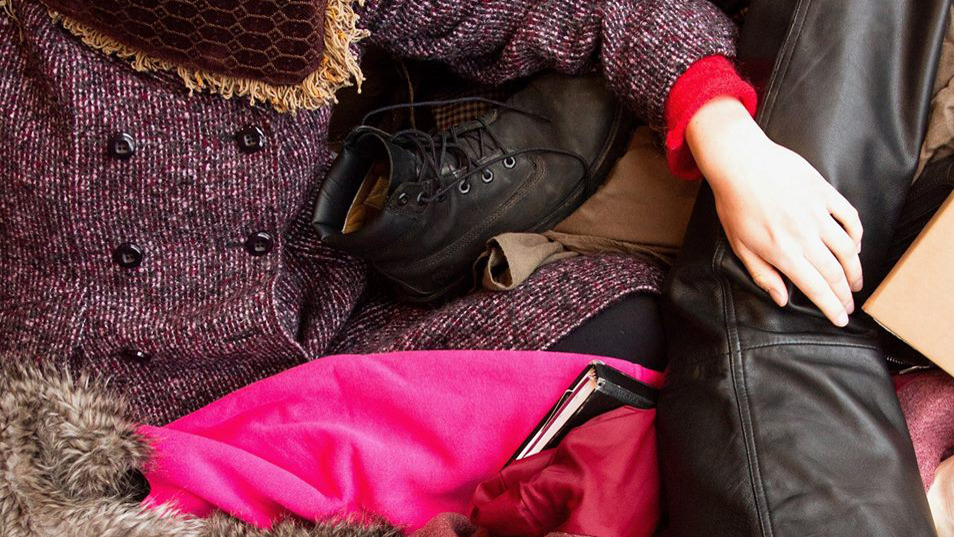Lost Property – table torque
1 March 2019, BATS Theatre, Wellington
NZ Fringe Festival
Reviewed by Leah Maclean

The Fringe Festival is an excellent platform for artists to test the waters and to experiment with their craft. Lost Property presented by the new Wellington collective, table torque, is a model example of that Fringe ethos – sitting somewhere between WTF and artful charm.
The first ten minutes of the work is executed in almost total darkness and near dead silence – bar the sound of the three performers of table torque pattering, sliding, and rustling across the stage. It's hard not to fall into a somewhat meditative state, lost in the comfort of the darkness (unseen by fellow audience members), listening to the deft movements of the performers, and occasionally catching lighted glimpses of nimble silhouettes on stage. This darkened sequence draws out and one can't help but wonder if the duration of the show is going to continue void of light. But before long the stage is starkly lit and Laura Beanland-Stephens, Gabriella Mersi and Anna Perrudin are revealed to the audience, their faces alight with wonder.
The work is built on the connection the three artists have with one another and with their environment. They have a striking relationship on stage and you can see the delight they share as they weave, reflect and trace the others movement thoughtfully. They take turns dashing to a lone chair and a discarded pair of boots at the front of the stage, and I am reminded of childhood lunchtimes playing tiggy. As they try to settle into their new environment, they perform at different levels, on different sides, in separate and shared spaces, and they generate abstract tableaus with their lithe bodies – here Perrudin's sinuous lines are absolutely captivating. Beanland-Stephens and Perrudin move off stage and Mersi is left to perform a solo in the spotlight. Her body shudders and contorts and she utters muffled incantations, eventually she sheds the bright pink turtle neck on her back. It joins the lone chair and lost boots at the front of the stage.
With each solo we are allowed a glimpse into the personality of each performer, but it is Beanland-Stephens who really shines in these moments. To a whimsical backing track, curated by Sébastian Speierer, the audience is treated to a powerful solo by Beanland-Stephens who launches herself across the stage; she twirls, flips and leaps as if no-one is watching. Perhaps a strange comparison, but I'm reminded of the emotion in films like Flashdance and Footloose. The light moves across the stage and Beanland-Stephens makes sure she is always in it. One of the most wonderful things about the solo is the unremitting smile she has on her face.
Beanland-Stephens, Mersi and Perrudin are lovely dancers, they exhibit beautiful long lines with great spatial awareness. However the choreography seems a little bit safe, the performers themselves uncertain at times, and their transitions are missing cohesion. But their ability to share the stage and respond to one another in kind, bodes well for their future as a dance collective. They each have a gentle yet strong presence on stage, which is a breath of fresh air when you compare it to some of the more aggressive works out there.
